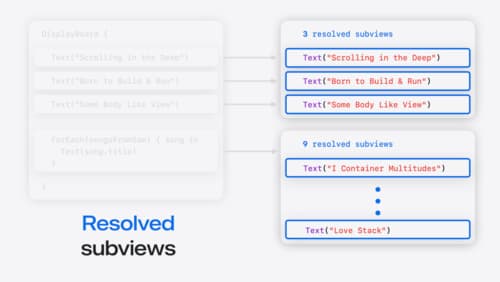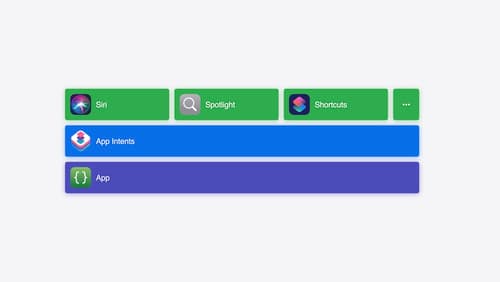existence container
Asked on 2024-08-12
1 search
It seems like you're interested in the concept of containers, particularly in the context of SwiftUI and SwiftData as discussed at WWDC. Here's a brief overview based on the sessions:
-
SwiftUI Containers: In the session "Demystify SwiftUI containers," SwiftUI introduces a new API for building container-specific modifiers called container values. These are a new kind of keyed storage, similar to environment and preferences, but they are accessible only by their direct container. This makes them ideal for implementing container-specific customization options. You can define new container values with just a few lines of code, using the new entry macro to add values to SwiftUI's keyed storage types. This session also covers how to create custom containers with capabilities similar to SwiftUI's built-in containers like List and Picker. For more details, you can check the Customization chapter.
-
SwiftData Containers: In the session "What’s new in SwiftData," the concept of a model container is introduced. This allows apps to fine-tune data location and usage. The model container modifier is a straightforward way to get started, but you can also create your own model container instance for more customization, such as changing where data is saved on disk. SwiftData also supports fully custom data stores, allowing you to use your own implementation to persist data. This is particularly useful if you have specific data formats, like JSON, that you want to use. For more information, you can refer to the Tailor a model container chapter.
If you have any specific questions about these topics or need further details, feel free to ask!

Demystify SwiftUI containers
Learn about the capabilities of SwiftUI container views and build a mental model for how subviews are managed by their containers. Leverage new APIs to build your own custom containers, create modifiers to customize container content, and give your containers that extra polish that helps your apps stand out.

What’s new in SwiftData
SwiftData makes it easy to add persistence to your app with its expressive, declarative API. Learn about refinements to SwiftData, including compound uniqueness constraints, faster queries with #Index, queries in Xcode previews, and rich predicate expressions. Join us to explore how you can use all of these features to express richer models and improve performance in your app. To discover how to build a custom data store or use the history API in SwiftData, watch “Create a custom data store with SwiftData” and “Track model changes with SwiftData history”.

Bring your app’s core features to users with App Intents
Learn the principles of the App Intents framework, like intents, entities, and queries, and how you can harness them to expose your app’s most important functionality right where people need it most. Find out how to build deep integration between your app and the many system features built on top of App Intents, including Siri, controls and widgets, Apple Pencil, Shortcuts, the Action button, and more. Get tips on how to build your App Intents integrations efficiently to create the best experiences in every surface while still sharing code and core functionality.
